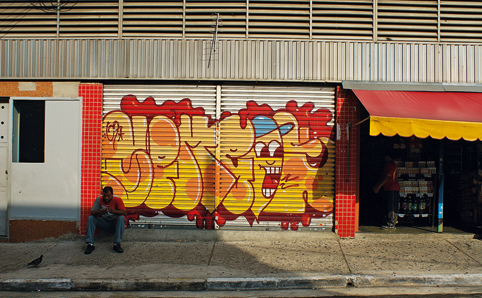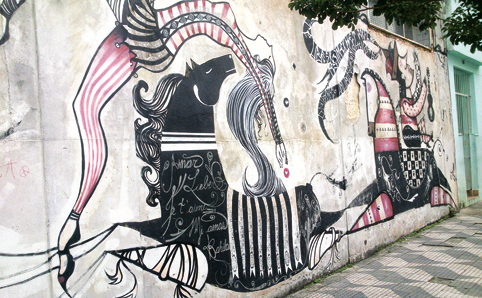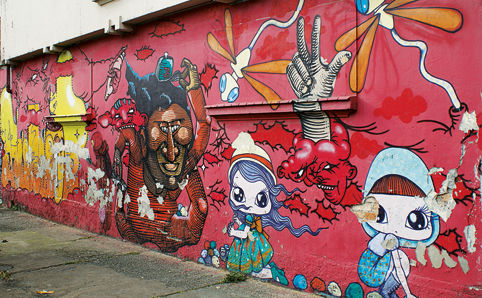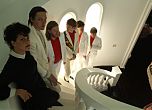
As visceral and colourful as it is ephemeral, street art has been one of SP's favourite art forms for many years now. And while it may also be ubiquitous, with almost no street devoid of the spray-can's sweeping marks, some neighbourhoods in particular are worth a wander, with Vila Madalena one of the most infamous graffiti hotspots.
To explore street art that's more off the beaten path, head to the south-eastern residential neighbourhood of Cambuci – the birthplace of two of São Paulo's most famous street artists, with works old and new reflecting the realities of life for its residents.
Local artist Thaís Beltrame is here to show us around Cambuci, perhaps best known in the annals of street art as the place where the twin brothers Otávio and Gustavo Pandolfo – OsGemeos ('the twins') – were born and grew up. It doesn't take long to see that OsGemeos and their troupe run the show here.
'Graffiti is a very territorial art form,' explains Beltrame. 'If an artist is first to occupy a space, that space belongs to him or her. Even if it's covered in grey paint,' she says, referring to the fate of much of the city's street art, painted over following a clean-up mandate by former SP mayor Gilberto Kassab.
 |
| OsGemeos grapixo on Rua Barão de Jaraguá |
OsGemeos have been painting in Cambuci since they were kids, transforming even the most prominent of spaces, like the long wall on Rua dos Lavapés next to the Igreja da Glória church. Look out for the serene faces of two wide-eyed children, staring out from amongst a background of yellow grapixos – a mixed technique of graffiti and tagging.
The faces and the grapixos are reflected in a big pool of water, which in turn is submerging a valley of trees and mountains, depicting one of Cambuci's most depressing problems – flooding. We duck down one of the quiet side streets, with the grey clouds overhead threatening rain. We press on, despite the risk of getting stranded here should the heavens open.
From Largo do Cambuci, we are watched over by an OsGemeos giant, its head formed by the rooftop engine room of an elevator with the body spanning the façade of the building's floors below (Rua Clímaco Barbosa 110). We spot more of OsGemeo's grapixos, on the corner of Rua Clímaco Barbosa and Rua Barão de Jaraguá. From there, heading towards Avenida do Estado, almost all the streets surrounding Rua Barão de Jaraguá feature figurative, typographical or mixed graffiti.
 |
| Rua dos Alpes mural by Vitché |
It's not all about the famous twins, however. The neighbourhood's spaces also belong to artists like Nunca, Vitché, Nina and Ise, all important names in the graffiti generation from the last decade. Turn right from Rua Barão de Jaraguá onto Rua Cesário Ramalho and you'll spot pieces by Vitché (above), Ise and Nunca as well as OsGemeos.
Further on, on the corner of Rua Estéfano and Rua Silveira da Motta, you'll find one of Cambuci's largest murals, featuring creations by all the area's key grafiteiros, with the surprise addition of a work by Onesto, well known for his blend of fantasy and humour.
Back on Barão de Jaraguá we spot more pieces by Nunca and OsGemeos. And on Rua dos Alpes 411, on the right, sits one of the most beautiful artworks of the tour – a mural by Vitché, in which a fantastical carriage is drawn by a flock of birds.
As we wend our way back to Largo do Cambuci, we pass a tiled Space Invader, one of a host of small coloured invaders that the eponymous French artist slyly installed across the city in 2011 (Rua Clímaco Barbosa 19). It's perfect timing, just as the first raindrops start to fall.
Cambuci street art map
View Time Out São Paulo walks: Cambuci street art in a larger map
This feature was published in March 2013



